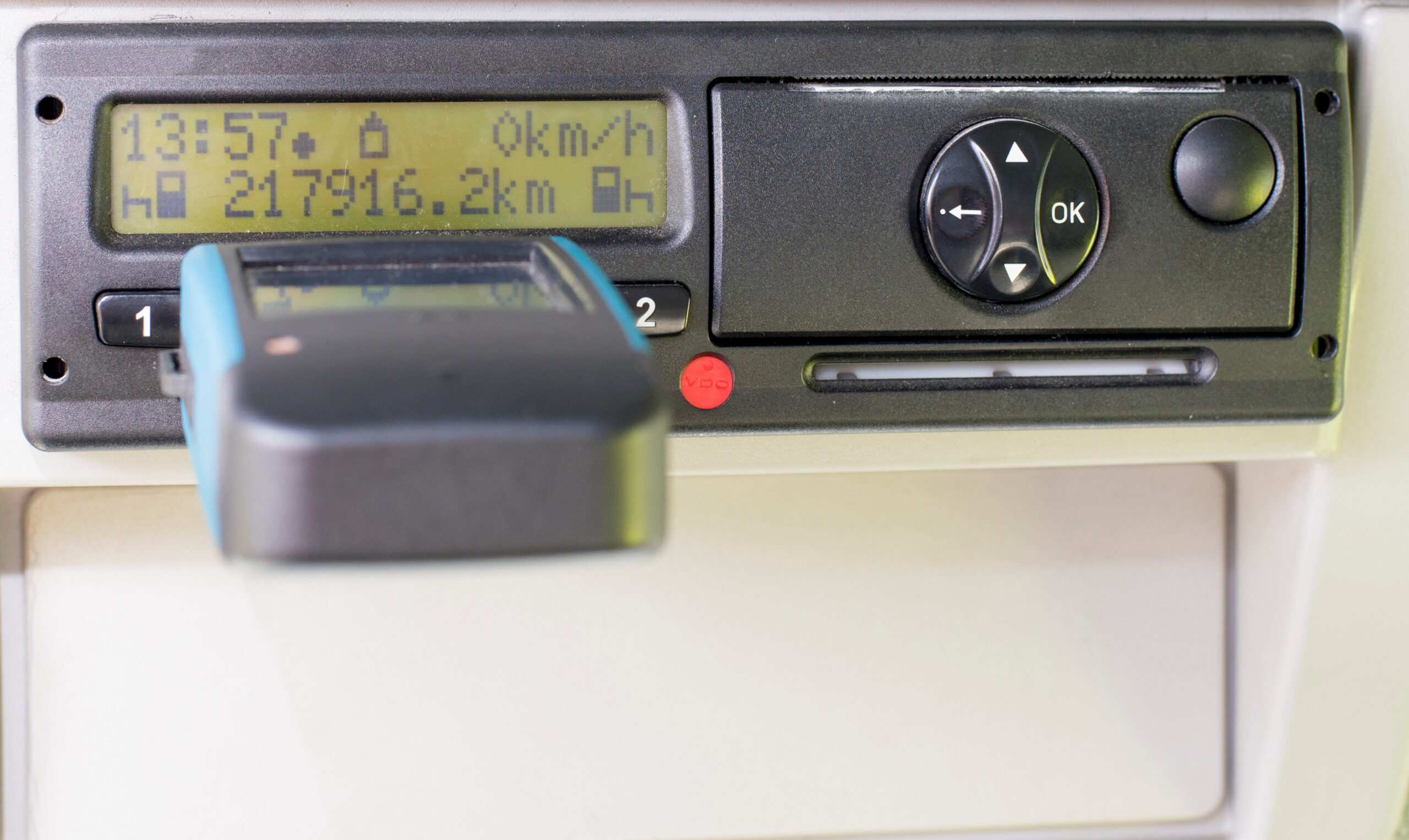
Tachograph Analysis is the method to measure and monitor how your drivers are performing in their day-to-day driving and work duties.
Tachograph analysis provides the transport manager, or compliance officer (Restricted Licence holders) with detailed reports, highlighting areas for attention. By recording speed and distance, the tachograph provides an accurate picture of what a driver has been doing, even whether or not they have broken the law.
Every fleet operator must ensure they have the means to analyse driver data from both the tachograph vehicle unit (VU) and the Driver Card and to manage all downloaded data correctly.
Responsibilities of Tachograph Operators
The following information relates to Operator responsibilities in connection with recording equipment (tachographs). Failure to adhere to the requirements of these responsibilities can lead to the suspension, curtailment or even revocation of your company operator license.
Operators of transport undertakings have legal responsibilities and liabilities for their own compliance with the regulations and that of the drivers under their control. Transport undertakings must:
Download data from the vehicle unit
Operators must download data from the vehicle unit:
A record of a download schedule should be maintained to ensure data is not lost.
Download data from driver cards
You must download data from driver cards:
Provide copies
Provide copies of charts and digital data to drivers if requested to do so.
Regular checks
Make regular checks of charts and digital data to ensure compliance.
Produce records
Be able to produce records to enforcement officers for a minimum of 12 months. The traffic commissioners requires tachograph data records to be available for 15 months; 2 years if using the data to record working time records.
Breaches of rules
Take all reasonable steps to prevent breaches of the rules.
Source – DVSA